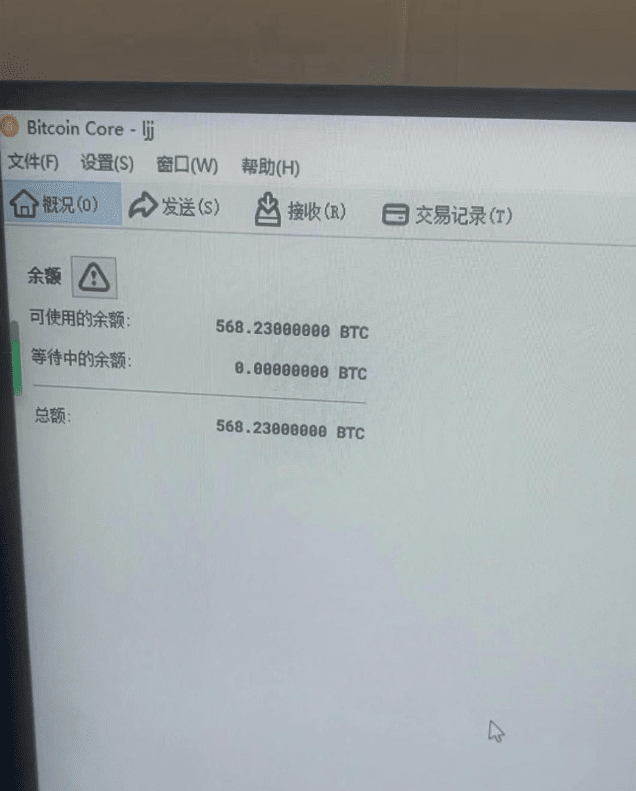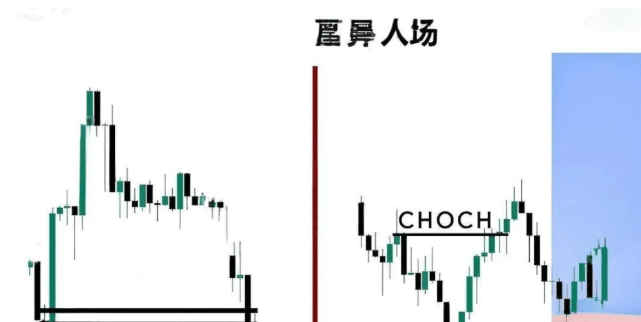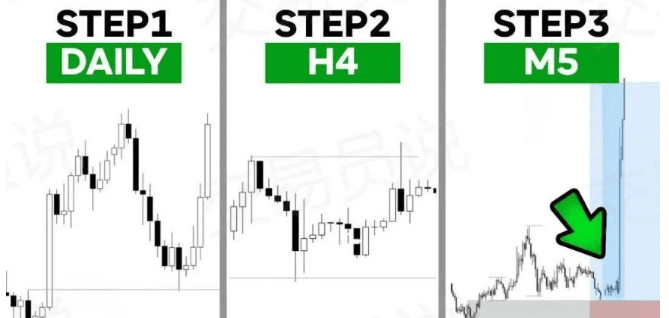In 2017, I was involved in the Bitcoin+ circle for eight or nine years, which earned me more wealth than I could ever earn in my entire life, even surpassing more than 99% of the people around me.
Many newbies rush into the market without knowing anything, acting recklessly. But I'm different. It was my connection to Bitcoin that transformed my life from a miserable existence to a path of prosperity.
I am a trading expert with assets exceeding 10 million, and I own 568 bitcoins.

Lead the new generation of cryptocurrency enthusiasts to fully utilize their remaining energy. Today, Ocean will share an effective profit model in the cryptocurrency world. Learn how to dominate and carve out your own niche. Take it for free, no thanks!
Three Laws of the City Circle
Newton discovered the three laws of motion and became a great physicist. Today, let's summarize the three laws of motion. Do you think you can support us? Haha.
The rules of currency circle linkage
When Bitcoin (BTC) rises, mainstream coins follow suit; when Bitcoin falls, mainstream coins fall; Bitcoin fluctuates, altcoins run wild; when Bitcoin falls, altcoins run away.
This linkage rule is basically known to everyone in the cryptocurrency circle. Basically, it is always the big cake that takes the lead, and other coins follow the big cake’s mood.
This isn't an absolute statement, but it does indicate that this is how the market generally evolves. For example, the bull market from the beginning of this year to now has been driven by Bitcoin. Of course, some "monster" coins, model coins, and stand-alone coins are exceptions.
The second law: the law of timing + you need to wait patiently for the right time to buy and you should not wait for the right time to sell.
The operation of taking advantage of rebound is different from the operation in the rising market. In the rising market, you usually have to wait until the rising trend ends and the price of the currency stops rising and starts to fall before selling. However, in the rebound market, you don’t have to wait until the rising trend is about to end to sell.
When taking advantage of a rebound, it is important to emphasize selling early. Generally, you should decisively take profits after making some profits. If for some reason you have not made any profits yet, and the market rebound is about to reach its theoretical space, you should also decisively sell.
Because the duration and rising space of the rebound are limited, if you wait until the periodic top is confirmed before selling, it is usually too late.
The third law: The law of leeks + There are no leeks in the world. If there are too many people who are eager for success, they will inevitably become non-leeks! If you want to turn things around, don't worry about short-term gains and losses. It is difficult to have a chance of success if you worry about gains and losses! Finally: To summarize the three investment decisions of a master: 1. Invest in what you are familiar with; 2. Hold unswervingly; 3. Be prepared for overall coordination.
Success is not accidental, and opportunities are reserved for those who are prepared. Follow the official account (Private Key Ocean), where a helmsman who is good at combining medium and short-term arbitrage is located. In the future, no matter what the market conditions are like, I will accompany you all the way.
I know a friend in New York who likes to trade spot and occasionally contracts. He is particularly keen on bottom-fishing. The more the price drops, the more he increases his position. In just a few years, he has grown from a small business to a large one. Now he makes a living by speculating in cryptocurrencies.
I modified his "trading strategy" and put it into practice this year. In less than a year, I have made 29 million yuan with a principal of 200,000 yuan. I am sharing it now and hope it will be helpful to my fans!
One of the biggest challenges for traders in Smart Money Concepts (SMC) is accurately timing their entry. Even if you identify a high-probability trading opportunity on a higher timeframe, entering the market too early or too late can lead to unnecessary losses. This is why optimizing your entry points through lower timeframes is crucial.
Lower time frames, such as 15-minute (15M), 5-minute (5M), 3-minute (3M), and 1-minute (1M) charts, allow traders to more accurately time their trades. This way, traders can reduce risk, narrow their stop-losses, and maximize their profits.
This course will cover the following areas:
1. Why using a low time frame can improve trading accuracy
2. How to use multiple time frame resonance confirmation
3. How to gradually optimize from 15M to 1M for refined entry
4. Key concepts such as Breakthrough on Structure* (BOS) and Market Structure Shift+ (MSS)
5. How to use Order Block+ (OB) and Fair Value Gap+ (FVG) to achieve accurate market entry. Using low time frames has three core advantages:
1. Tighter stop-loss settings
When executing trades on higher timeframes (such as 1 hour or 4 hours), you usually need to set a larger stop loss range to cope with price fluctuations. When entering the market on a 1M or 3M chart, you can set a smaller stop loss point while maintaining the same direction as the larger cycle.
Significantly improve the risk-reward ratio.
2. Confirm whether smart money is actually involved
Rather than blindly entering the market when the price reaches the supply and demand zone on the high time frame, it is better to confirm whether there are signs of smart money behavior on the lower time frames. This includes observing structural breakthroughs, structural shifts, liquidity raids, and more detailed order blocks.
3. Avoid false breakouts
What appears to be a strong breakout on a higher timeframe may often be a scam (liquidity trap). By observing lower timeframes, traders can more clearly distinguish between true breakouts and false breakouts, thus avoiding being "tricked" by the market.
How to use multiple timeframe resonance to confirm SMC traders use a top-down analysis approach, that is, they analyze multiple timeframes before executing a trade. This method ensures that the entry direction is consistent with the overall market trend.
1. Higher Time Frame (HTF) - Daily, 4-hour, 1-hour
0 is used to determine the overall trend and trading bias.
0 Marks key supply and demand zones, order blocks (OB), fair value gaps (FVG), and liquidity areas.
0 Example: If the 4-hour chart shows a bullish structure, traders should look for long opportunities rather than short opportunities.
2. Medium Time Frame (MTF) - 15 minutes, 5 minutes
0 Used to optimize entry points by observing market structure shifts (MSS) and structure breakthroughs (BOS)
0 can help identify possible lower time frame entry areas.
0 Example: If the 15-minute chart shows a liquidation + BOS, it means that there are signs of smart money sucking in the market
3. Low Time Frame (LTF) - 3 minutes, 1 minute
0 provides the most precise entry point with the smallest loss.
0 Traders will look for the last BOS or MSS as confirmation before entering the market.
Example: Using a 1-minute chart order block to enter within the 15-minute demand zone allows for a smaller stop loss. This multi-timeframe analysis approach allows traders to improve trading accuracy and reduce risk.
Optimizing Entry Process from 15-Minute to 1-Minute Step #1: Identify the Higher Time Frame Trend
Before looking at the lower time frames, it is important to first determine the overall market direction by looking at the higher time frames such as the 4-hour or 1-hour chart.
0 If the market is in an uptrend, look for long opportunities.
0 If the market is in a downtrend, look for shorting opportunities.
Mark key areas where price may react, such as order blocks, fair value gaps (FVGs), and liquidity areas
Step #2: Look for market structure shifts on the 15-minute chart
Once the price enters the key area marked on the higher timeframe, switch to the 15-minute chart to observe the price action.
9. Liquidity plunder: If the price sweeps the previous high/low (such as sweeping the stop-loss order), it indicates that there is smart money manipulation.
0 Structural breakthrough: When the price breaks through the key structural position, it indicates that the trend may reverse.
0 Demand Zone Bounce: Price forms a strong rejection pattern in the demand zone, indicating that buying pressure is emerging. Step #3: Further optimize the entry on the 5M, 3M or 1M chart
After confirming the structural changes on the 15M chart, continue to look down at lower time frames (5M, 3M, 1M) to find the optimal entry point while minimizing the stop loss.
0 Look for the last BOS or MSS as a confirmation signal
0 Find a finer OB or FVG as an entry area.
0Wait for the price to fall back to OB or FVG before entering the market, rather than chasing the rise and fall
By refining the entry into the 1-minute chart, traders can achieve lower risk and higher precision entry operations. SMC key concepts: BOS, MSS, OBS and FVGs

1. Break of Structure (BOS)
A Breakout Structure (BOS) occurs when the price breaks through a key high or low, often signaling a continuation of the trend. A BOS on a 15-minute chart (15M) can be used to confirm trend direction, while a BOS on a 1-minute chart (1M) is primarily used for precise market entry.
2. Market Structure Shift (Mss)
A market structure shift (MSS) is a sudden reversal in price structure, usually caused by manipulation by smart money. This often occurs after a liquidity grab, with prices quickly reversing in the opposite direction.
3. Order Blocks (OBs) for Optimized Market Entries
The order block (OB) is where smart money once concentrated its positions. Compared to entering the market at any position, traders should choose the optimized order block in the lower time frame to improve the accuracy of entry.
4. Fair Value Gaps (FVGs) for Precise Market Entry
Fair Value Gaps (FVGs) are price gaps caused by institutional orders. These areas act as a "magnet," often attracting price pullbacks before continuing in the original trend. Using FVGs on the 1-minute or 3-minute charts within higher timeframes for entry allows for optimal trading accuracy.

1. 4-hour chart (4H): Price hits the demand zone on the higher time frame.
2.15-minute chart (15M): The price swept through the previous low (liquidity) and then broke through the structure upwards (BOS).
3.5-minute chart (5M): Price retraces to the newly formed long order block (Bullish OB).
4.1-minute chart (1M): The price enters the order block, and the BOS is formed again with the liquidity sweep.
5. Entry point: Go long at the order block position, and set the stop loss below the low point of the structure with a very small stop loss.
This entry method ensures minimal losses while maximizing potential profits.
in conclusion
Using lower timeframes to optimize entry is a powerful technique that allows traders to enter with greater accuracy, set smaller stops, and achieve a better risk-reward ratio. Rather than blindly entering based solely on higher timeframe signals, traders can further switch to 15-minute, 5-minute, or even 1-minute charts to confirm market structure, identify liquidity, and find "sniper" entries at order blocks (OBs) or fair value gaps (FVGs).
The ten iron laws of the cryptocurrency world, newcomers, remember them!
1. The hot coins in the bull market fall the fastest. The coins that are hyped up, especially those with serious market manipulation, will also see their bubbles burst quickly. The more people chase them, the more dangerous it is. Just like blowing up a balloon, if you blow it up too much, it will inevitably burst.
2. The strategies used by altcoins are similar. The general strategy is to initially plunge the price, then slowly push it up, switching tactics to continue profiting. This is how altcoins work, so be prepared.
3. The long-term trend of the market is upward. If you look at it over a long period of time, the curve of the circle is actually relatively stable. Short-term ups and downs are the norm, and long-term trends generally rise slowly.
4. Coins with real potential are often under-hyped. Coins with real potential often remain obscure and rarely mentioned. Conversely, lower-profile coins, such as C98 and LEVER, quietly rise in value. Be wary of newly listed coins on exchanges. Avoid those that experience rapid price increases or decreases; these are often traps designed by market makers, and you'll be ripped off if you fall into them.
6. It is common for stocks to fall when you buy them and rise when you sell them. This is very normal in the Shilan circle. If your mentality can't withstand this kind of fluctuation, you really need to practice hard.
The most violent rebound does not mean that the coin with the greatest potential for rebound is often not the one with potential, but the one that is hyped up for speculation. Don't be fooled by appearances. The coins with real potential have relatively stable fluctuations.
8. Be careful of being cut off in case of sudden pullback. If the price goes up after you buy the currency and then suddenly pulls back, it may be that the dealer has started to sell the currency. Be careful not to be cut off.
9. In the second half of the bull market, coins that performed generally in the early stage may explode several times in the second half. They are like marathon runners who exert their strength in the latter stage.
10. Markets that have been sideways for months may experience a bull market. Some markets can still remain sideways for months after experiencing a multi-fold increase. These are likely waiting for the next wave of explosive growth. You must keep a close eye on these coins. If operations are not going smoothly and you are confused, remember two things: first, be proactive and act decisively; second, stay online and respond promptly to any news!
Meeting is fate, knowing each other is destiny. I firmly believe that those who are destined to meet will eventually meet, while those who are not destined to meet will pass by each other by fate. The investment journey is long, and temporary gains and losses are just the tip of the iceberg. Remember, even the wisest will make mistakes, and even the foolish will gain something. No matter how you feel, time will not stand still for you. Gather the worries in your heart, stand up again, and move forward.
Giving a man a fish is not as good as teaching him how to fish. Whether you're a novice or an expert, investors in my circle will benefit not only from financial gains but also from growing their investment knowledge and experience. In the investment process, I will not only provide investors with market analysis, market fundamentals, and how to use various investment tools, but also provide insightful interpretations of fundamentals, a breakdown of the chaotic international situation, and the identification of various investment forces. This will help you become both a winner and an expert in your investment!
Navigating the cryptocurrency market requires mastering the seven key trading principles and a deep understanding of investment strategies. Only then can you remain rock-solid in times of trouble and navigate pitfalls. Having traversed the market for years, I'm well-versed in both opportunities and pitfalls. If your investments aren't going your way and you're struggling with losses, leave 999 Wuchang and share your winning codes!